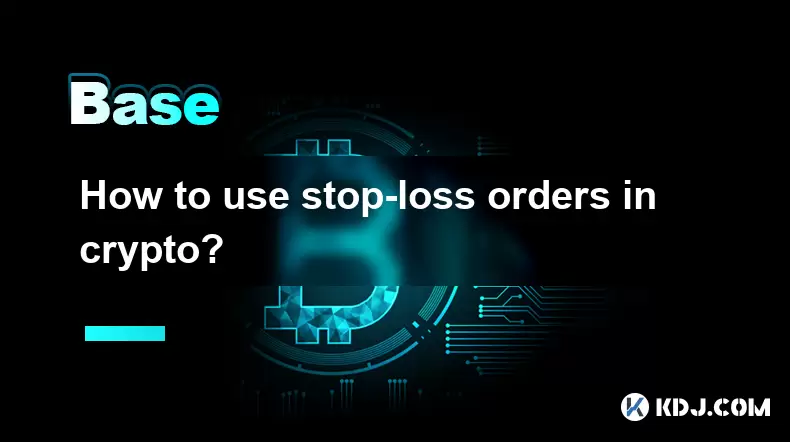-
 Bitcoin
Bitcoin $117400
-0.46% -
 Ethereum
Ethereum $3768
0.60% -
 XRP
XRP $3.551
2.09% -
 Tether USDt
Tether USDt $1.000
0.00% -
 Solana
Solana $203.2
11.30% -
 BNB
BNB $770.9
1.92% -
 USDC
USDC $0.9999
0.01% -
 Dogecoin
Dogecoin $0.2709
-0.02% -
 Cardano
Cardano $0.9024
4.49% -
 TRON
TRON $0.3139
0.60% -
 Hyperliquid
Hyperliquid $45.60
-1.41% -
 Stellar
Stellar $0.4730
-1.34% -
 Sui
Sui $4.025
2.15% -
 Chainlink
Chainlink $19.79
2.19% -
 Hedera
Hedera $0.2724
-2.39% -
 Avalanche
Avalanche $25.93
3.05% -
 Bitcoin Cash
Bitcoin Cash $524.0
-1.83% -
 Shiba Inu
Shiba Inu $0.00001558
0.50% -
 Litecoin
Litecoin $116.7
-0.30% -
 UNUS SED LEO
UNUS SED LEO $8.996
0.00% -
 Toncoin
Toncoin $3.334
1.83% -
 Polkadot
Polkadot $4.506
0.34% -
 Uniswap
Uniswap $10.99
4.83% -
 Ethena USDe
Ethena USDe $1.001
0.03% -
 Pepe
Pepe $0.00001461
3.17% -
 Monero
Monero $320.3
-1.01% -
 Bitget Token
Bitget Token $4.935
0.36% -
 Dai
Dai $0.9998
0.00% -
 Aave
Aave $322.4
-1.25% -
 Bittensor
Bittensor $455.6
9.33%
How to use stop-loss orders in crypto?
Stop-loss orders are essential in crypto trading to limit losses, with types like standard, trailing, and stop-limit offering flexibility based on strategy and market conditions.
Jul 21, 2025 at 10:07 pm

Understanding the Basics of Stop-Loss Orders in Cryptocurrency Trading
A stop-loss order is a type of trade order used by traders to limit potential losses on a position. In the context of cryptocurrency trading, where volatility is high and price movements can be rapid, using stop-loss orders becomes essential for risk management. When a trader sets a stop-loss, they specify a price at which their position will be automatically closed if the market moves against them. This helps prevent emotional decision-making and protects capital from significant drawdowns.
For example, if you buy Bitcoin at $30,000 and set a stop-loss at $28,500, your position will be sold if the price drops to that level. This prevents further losses should the price continue to fall. It's important to understand that a stop-loss doesn't guarantee the exact price execution, especially in fast-moving markets, where slippage can occur.
Types of Stop-Loss Orders Available in Crypto Exchanges
Most cryptocurrency exchanges offer several types of stop-loss orders, each with its own characteristics and use cases. The most common types include:
- Standard Stop-Loss: This is the basic form of a stop-loss, where an order is triggered when the market price reaches the specified level.
- Trailing Stop-Loss: This dynamic stop-loss follows the market price at a set distance or percentage. If the price moves in your favor, the stop-loss adjusts accordingly, locking in gains while still protecting against downside.
- Stop-Limit Order: This combines a stop-loss with a limit price. Once the stop price is reached, the order becomes a limit order, meaning it will only execute at the specified limit price or better. However, this can lead to partial fills or no execution during volatile periods.
Choosing the right type depends on your trading strategy, market conditions, and the specific crypto asset you're trading. Understanding these types ensures you can implement stop-loss orders effectively in your trading plan.
How to Set a Stop-Loss Order on a Crypto Exchange
Setting a stop-loss order is a straightforward process on most crypto exchanges. Below is a step-by-step guide using a typical exchange interface:
- Log in to your preferred cryptocurrency exchange.
- Navigate to the trading pair you are interested in (e.g., BTC/USDT).
- Locate the order placement section, usually found on the right or center of the trading interface.
- Select the order type as “Stop-Loss” or choose from the available options like “Stop-Limit” or “Trailing Stop.”
- Enter the amount of cryptocurrency you wish to trade.
- Input the stop price, which is the price level that will trigger the order.
- If using a stop-limit order, also enter the limit price at which you want the order to execute.
- Review the details and click “Place Order” to confirm.
It's crucial to double-check all fields before submitting, especially the stop and limit prices. A small mistake can lead to unintended trades or losses. Some exchanges also allow you to set stop-loss orders directly from your open positions tab after entering a trade.
Best Practices for Using Stop-Loss Orders in Crypto
Using stop-loss orders effectively requires more than just placing them randomly. Traders should consider several factors to optimize their use:
- Analyze Volatility: Highly volatile assets may require wider stop-loss levels to avoid being stopped out prematurely due to normal price fluctuations.
- Use Technical Analysis: Placing stop-losses just below key support or above resistance levels can help avoid false breakouts and unnecessary losses.
- Consider Market Conditions: During news events or major market shifts, tighter stops may be appropriate to protect against sudden moves.
- Combine with Take-Profit Orders: Using both stop-loss and take-profit orders creates a balanced risk-reward profile for each trade.
- Review and Adjust: As the market evolves, so should your stop-loss levels. Traders often adjust their stops to lock in profits or respond to changing conditions.
These strategies ensure that stop-loss orders are not just reactive tools but part of a proactive trading plan.
Common Mistakes to Avoid When Using Stop-Loss Orders
While stop-loss orders are powerful tools, many traders make errors that reduce their effectiveness:
- Placing Stops Too Close: Setting stop-loss levels too near the entry price can lead to early exits due to normal market noise.
- Ignoring Order Types: Not understanding the difference between stop-market and stop-limit orders can result in poor execution during fast markets.
- Using the Same Stop-Loss for All Trades: Each trade has unique characteristics, and stop-loss levels should be adjusted accordingly.
- Failing to Use Trailing Stops: Missing out on locking in profits by not using trailing stop-loss orders in trending markets.
- Emotional Adjustments: Moving stop-losses after a trade is open due to fear or hope can lead to larger losses or missed opportunities.
By being aware of these pitfalls, traders can use stop-loss orders more effectively and maintain discipline in their trading approach.
Frequently Asked Questions
Can I set a stop-loss order on all crypto exchanges?
Most major cryptocurrency exchanges support stop-loss orders, but the availability and types of stop-loss may vary. Some smaller or newer exchanges might not offer advanced order types like trailing stops or stop-limit orders. Always check the features available on your chosen platform before initiating trades.
Why didn’t my stop-loss order execute during a crash?
During periods of extreme volatility or market crashes, stop-loss orders may not execute at the desired price due to slippage or lack of liquidity. In such cases, especially with stop-market orders, your trade may execute at a worse price than expected. Using a stop-limit order might prevent this, but it could also result in no execution at all.
Should I use stop-loss orders on small-cap cryptocurrencies?
Yes, but with caution. Small-cap cryptocurrencies are often more volatile and less liquid. This means stop-loss orders may be triggered more frequently or may not execute properly. Consider wider stop-loss levels or using limit orders to manage execution risks.
Is it possible to place a stop-loss order after entering a trade?
Yes, most exchanges allow you to place a stop-loss order after you've already entered a trade. You can do this from your open positions tab or by manually placing a stop-loss order for the amount you're holding. Always ensure the order is correctly linked to your existing position.
Disclaimer:info@kdj.com
The information provided is not trading advice. kdj.com does not assume any responsibility for any investments made based on the information provided in this article. Cryptocurrencies are highly volatile and it is highly recommended that you invest with caution after thorough research!
If you believe that the content used on this website infringes your copyright, please contact us immediately (info@kdj.com) and we will delete it promptly.
- XRP, Bitcoin, Ripplecoin: Navigating the Crypto Landscape in 2025
- 2025-07-22 20:30:13
- Cardano Ecosystem Watch: Can PayFi Token Remittix Trigger an ADA Overtake?
- 2025-07-22 20:50:13
- JasmyCoin Price Forecast: Chart Analysis Points to Potential Surge
- 2025-07-22 20:55:13
- Remittix, XRP, and Dogecoin: What's Hot in the Crypto Game Right Now?
- 2025-07-22 20:10:14
- BlockchainFX, PEPE, and USDT: What's the Buzz in the Crypto Jungle?
- 2025-07-22 18:50:12
- Ripple's RLUSD: Institutional Backing Fuels Stablecoin Ascent
- 2025-07-22 18:30:12
Related knowledge

What is the difference between CeFi and DeFi?
Jul 22,2025 at 12:28am
Understanding CeFi and DeFiIn the world of cryptocurrency, CeFi (Centralized Finance) and DeFi (Decentralized Finance) represent two distinct financia...

What is the difference between a sidechain and a Layer 2?
Jul 20,2025 at 11:35pm
Understanding the Concept of SidechainsA sidechain is a separate blockchain that runs parallel to the main blockchain, typically the mainnet of a cryp...

What is the Inter-Blockchain Communication Protocol (IBC)?
Jul 19,2025 at 10:43am
Understanding the Inter-Blockchain Communication Protocol (IBC)The Inter-Blockchain Communication Protocol (IBC) is a cross-chain communication protoc...

How does sharding improve scalability?
Jul 20,2025 at 01:21am
Understanding Sharding in BlockchainSharding is a database partitioning technique that is increasingly being adopted in blockchain technology to enhan...

What is the "crypto trilemma" of scalability, security, and decentralization?
Jul 19,2025 at 06:28pm
Understanding the Concept of the Crypto TrilemmaThe crypto trilemma refers to the challenge of simultaneously achieving scalability, security, and dec...

What is a cliff and vesting schedule in tokenomics?
Jul 20,2025 at 10:28am
What Does a Cliff Mean in Tokenomics?In tokenomics, a cliff refers to a specific period during which token holders are not allowed to access or transf...

What is the difference between CeFi and DeFi?
Jul 22,2025 at 12:28am
Understanding CeFi and DeFiIn the world of cryptocurrency, CeFi (Centralized Finance) and DeFi (Decentralized Finance) represent two distinct financia...

What is the difference between a sidechain and a Layer 2?
Jul 20,2025 at 11:35pm
Understanding the Concept of SidechainsA sidechain is a separate blockchain that runs parallel to the main blockchain, typically the mainnet of a cryp...

What is the Inter-Blockchain Communication Protocol (IBC)?
Jul 19,2025 at 10:43am
Understanding the Inter-Blockchain Communication Protocol (IBC)The Inter-Blockchain Communication Protocol (IBC) is a cross-chain communication protoc...

How does sharding improve scalability?
Jul 20,2025 at 01:21am
Understanding Sharding in BlockchainSharding is a database partitioning technique that is increasingly being adopted in blockchain technology to enhan...

What is the "crypto trilemma" of scalability, security, and decentralization?
Jul 19,2025 at 06:28pm
Understanding the Concept of the Crypto TrilemmaThe crypto trilemma refers to the challenge of simultaneously achieving scalability, security, and dec...

What is a cliff and vesting schedule in tokenomics?
Jul 20,2025 at 10:28am
What Does a Cliff Mean in Tokenomics?In tokenomics, a cliff refers to a specific period during which token holders are not allowed to access or transf...
See all articles

























































































